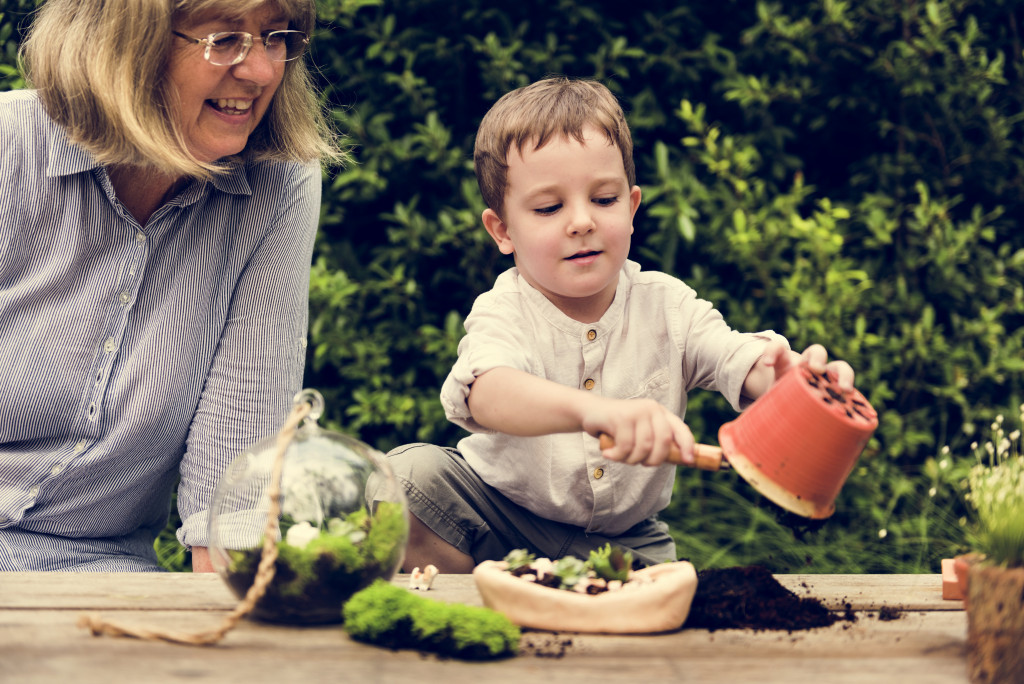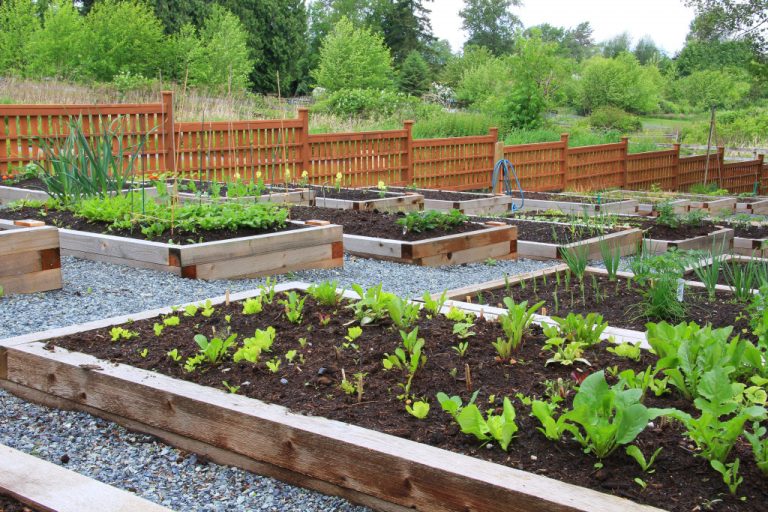There are many benefits to gardening for kids. Gardening helps teach kids about where food comes from, how plants grow, and the importance of healthy eating. It’s also a fun and rewarding activity that provides children with exercise and fresh air.
And finally, gardening can instill a sense of responsibility in kids, teaching them how to care for plants and watch them thrive.
Children can acquire a variety of skills by gardening. Kids who have a vegetable garden learn about measuring and math, they improve their problem-solving skills, and they’re even better at creative thinking. They also gain knowledge of biology when they see how plants grow from seeds under the soil.
This is an educational hobby that your child will enjoy for a lifetime.
But how do you get your child excited about maintaining a vegetable garden? Here are some tips on making a vegetable garden successful with your children:
Think Like a Kid
Before you plant anything, sit down with your child and plan out what kinds of vegetables they’d like to grow. The more enthusiastic they are about the project the more likely they’ll do it on their own! It’s also important to keep them involved throughout all stages of the process, including planning, planting, growing, harvesting, cooking, and eating.
Kids can be very creative when it comes to thinking up new ideas for their vegetable gardens. When choosing seeds or seedlings for your garden make sure there are some fun varieties available that might not otherwise be available at local nurseries. The same goes for containers – let kids help choose something that they think will look fun.
Everything in the garden should be chosen to make the project fun, not just because it works well for gardening. This is also what will keep your children interested in maintaining their gardens long after they’re done!
Small and Easy

The vegetable garden should be easy to maintain. Since kids will need to water the plants and weed the garden, you’ll want to make sure that everything can be done without too much bending or crouching.
You’ll also want it to be well-organized (to keep things simple), and offer enough space for kids to work on their own without getting in each other’s way. When choosing vegetables, opt for varieties that mature quickly so there isn’t a long wait before they can enjoy eating them.
The vegetables that are perfect for your little gardeners include lettuce, spinach, arugula, peas, tomatoes, carrots, and radishes. All of these are easy to grow.
You should also consider installing an irrigation system so watering the garden becomes easy for kids.
Easy Accessibility
Being close is important because children are easily distracted and don’t have as much patience as adults do when waiting for something fun to happen. You’ll need a hose nearby so kids can water the plants easily, and a garden cart so you have a place to store all of your gardening tools.
Introduce Them to Different Garden Helpers
There are many helpful critters who like to play in the garden, but it’s important for children to know how to identify them. Some helpers you can introduce your kids to include ladybugs (which eat aphids), snails (which help keep down slug populations), earthworms (who aerate the soil and spread nutrients around), bees (who pollinate flowers), and butterflies (who lay eggs on milkweed so Monarch caterpillars will have food).
It’s important for kids to be acquainted with these creatures because they’ll encounter different insects as they tend to the garden. They have to know which is capable of helping the garden stay healthy and beautiful, and which to remove,
Consequences for Failure
If your kids aren’t careful with maintaining their garden, red worms and other pests may eat the vegetables before they have a chance to be harvested.
Talk with your children about how to take good care of their garden so that every plant has the opportunity to flourish into something delicious! And don’t forget about encouraging your kids to practice proper food safety, too.
Set Up an Area for Harvesting
Make sure there is space set aside in the vegetable garden for picking, chopping, and washing vegetables where kids can learn about what goes on before eating veggies. Let them help you prepare meals together so they can see first-hand just how much work it takes to grow those veggies. This might also help encourage them to actually sit down at the dinner table and eat it!
These are all things you can do in your vegetable garden to ensure that you and your child have an enjoyable experience.
